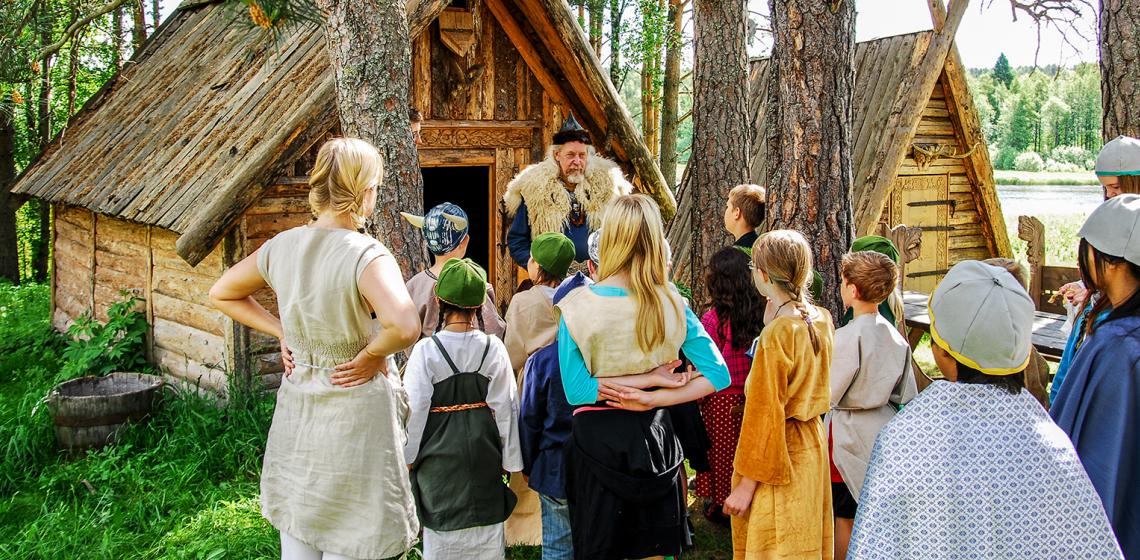Nysäter Vikingacenter (SE)

In 2009, the Värmlands Vikingacenter, a centre entirely devoted to the history of the Vikings, opened to visitors at Värmland, on the northern shore of lake Vänern, in southwest Sweden.
Extensive meadowland next to the river, which flows into the Harefjorden, reproduces a Viking Age environment where, during the summer months, demonstrations of handcraft techniques are performed and theme-based markets take place. A modern structure houses an exhibition that is well-known to enthusiasts: it consists mainly of scale reproductions of daily activities performed in a Viking port. These were previously displayed at the Jorvik Viking Center in York (England - UK), and acquired with the help of local associations. The exhibition shows a Street from the 10th century AD in full scale, with seven home environments complete with dolls of people, with audio environments, craft equipment and explanatory texts and pictures to each environment. The exhibition also tells of the Viking Age Divine myths, of Värmland ancient history, older crafts and construction of the ship Glad of Gillberga. In addition to the permanent exhibitions temporary exhibitions during the season.
Part of the exhibition called Skull Splitter also shows the warlike part of the Viking Age world through pictures of skeletons for the Norwegian warriors who fell in the battles outside York in 1066, when Viking king Harald Hardrada attacked England with a fleet of about 300 ships. The aim was to conquer England in its entirety and that Harald would take over the English crown. It failed.
Outside, moored by the river bank, the Viking warship “Glad of Gillberga” awaits visitors for an exhilarating voyage. The ship is a creation based on wreck finds from the Roskilde Fjord in Denmark. It is a warship with 13 pairs of oars and a sail of 48 square meters. It is about 17.5 meters long and about 2.85 meters wide amidships. It weighs about 3 tons. Sail speed has been up to over 15 knots. The ship has been out for several long voyages: to Canada (2000), to Norway and Denmark.
Source text and photo: Website Vikingaleden
